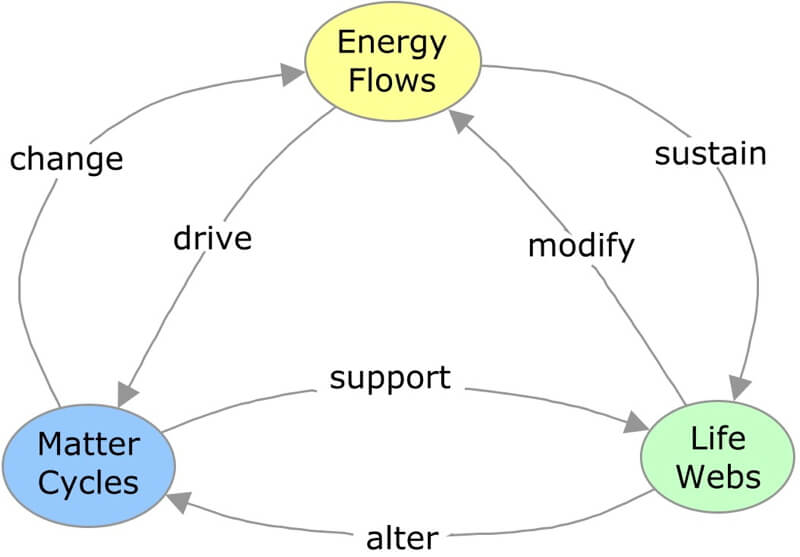← Exoplanets | Vectors and Forces →
Planet Orbit and Complex Life
A planet forms from the violent collisions of various sizes and density objects moving at very high speeds through space. The kinetic energy of the moving particles transforms into heat, melting the colliding objects. A forming planet consists of molten liquid and scorching gas – so it is lifeless. As the planet begins to cool, if water vapor (the gas form of water) is present, it will condense and form liquid water. But if the planet cools too much, the water turns to ice, and the chance of life forming disappears.
Climate Stability and Complex Life
Complex, multicellular life takes billions of years to evolve from primitive single-cell organisms, let alone from the first organic molecules that formed on Earth. Simple life forms were present on Earth at least 3.5 billion years ago. These early life forms led to photosynthesizing bacteria that altered the Earth’s atmosphere by releasing oxygen to the atmosphere and removing a portion of the carbon dioxide. If the Earth’s orbit were not stable, the first photosynthesizing plants would not have evolved to make Earth habitable for oxygen-breathing animals. Complex multicellular life forms didn’t appear until 600 million years ago. This brief article is an excellent summary of why Earth was favorable for the long-term evolution of multicellular life.
Life requires consistently available sources of energy and materials to develop, evolve, and thrive. Once even simple life forms exist, they alter their environment to harness additional sources of energy and matter. Emerging research suggests that Earth has evolved through five stages in which life forms exploit new and more powerful energy forms. The first energy form is geochemical energy, and all compounds have this. The second form is sunlight, and this is where a planet needs consistent solar radiation over very long periods. If lucky enough, plants evolve, producing enough oxygen to create the next energy source for animals. Animals evolved to become an energy source for carnivores. And currently, fire is the latest source of energy that humans are utilizing for their survival.

Earth processes are driven by energy, and Earth systems rely on the interaction of energy, matter, and life.
Big Ideas
- Since the creation process is so violent and severe, life cannot exist on a newly formed planet.
- Life requires consistently available sources of energy and materials to develop, evolve, and thrive.
- Once even simple life forms exist, they alter their environment to harness additional sources of energy and matter.
← Exoplanets | Vectors and Forces →

0 Comments